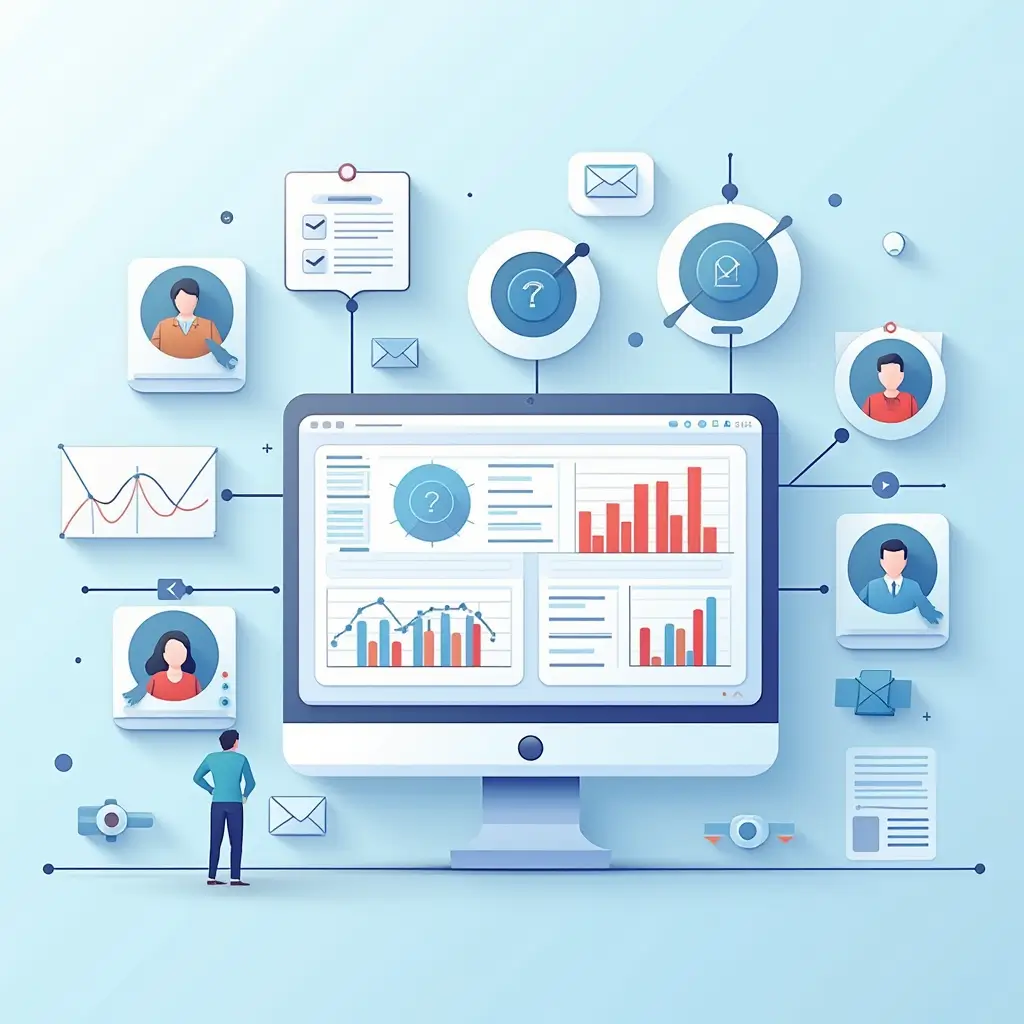Customer Relationship Management (CRM) software serves as the central hub for managing all customer interactions and relationships. Here’s a detailed explanation of how CRM systems work:
Core Architecture
CRM software functions as a centralized database that collects, stores, and analyzes customer information. Modern CRM systems are typically cloud-based, allowing access from anywhere with an internet connection, though on-premises solutions still exist for organizations with specific security requirements.
Data Collection
CRMs gather customer data from multiple sources:
- Direct interactions (calls, emails, meetings)
- Website visits and form submissions
- Social media engagement
- Purchase history
- Support tickets
- Marketing campaign responses
This data creates comprehensive customer profiles that include contact information, communication history, purchase patterns, and support issues.
Key Components
Contact Management
The foundation of any CRM is contact management. The system stores detailed information about customers, prospects, and partners, including:
- Basic contact details
- Communication history
- Relationship status
- Account hierarchies and connections
Sales Automation
CRM systems streamline the sales process by:
- Tracking leads through the sales pipeline
- Automating follow-up reminders
- Providing sales forecasting
- Managing quotes and proposals
- Documenting sales activities
Marketing Integration
CRMs enhance marketing efforts through:
- Campaign management
- Lead scoring and qualification
- Email marketing automation
- Marketing analytics and ROI tracking
- Customer segmentation
Customer Service
Service components include:
- Case management for support tickets
- Knowledge bases for self-service
- Service level agreement (SLA) tracking
- Customer feedback collection
- Issue resolution workflows
Workflow Automation
Modern CRMs use automation to reduce manual tasks:
- Trigger emails based on customer actions
- Assign leads to sales reps based on predefined rules
- Schedule follow-ups automatically
- Create tasks when certain conditions are met
- Generate reports periodically
Analytics and Reporting
CRMs provide insights through:
- Customizable dashboards
- Performance metrics
- Sales forecasting
- Customer behavior analysis
- ROI calculations
Integration Capabilities
CRMs connect with other business systems:
- Email platforms
- ERP systems
- E-commerce platforms
- Social media
- Marketing automation tools
- Accounting software
User Experience
Most CRMs offer:
- Role-based access controls
- Mobile applications
- Customizable interfaces
- Collaboration tools
- Notification systems
Implementation Process
When an organization adopts a CRM:
- Requirements gathering and planning
- System configuration and customization
- Data migration from legacy systems
- Integration with existing tools
- User training and adoption strategies
- Ongoing maintenance and updates
Advanced Features
Modern CRMs increasingly incorporate:
- AI-powered predictive analytics
- Chatbots for customer engagement
- Voice recognition for call logging
- Sentiment analysis of customer communications
- Automated data enrichment
CRM software has evolved from simple contact databases to comprehensive platforms that manage the entire customer journey, helping businesses build stronger relationships and drive growth through improved customer understanding and engagement.
Don’t forget to read our latest article on Generative AI
